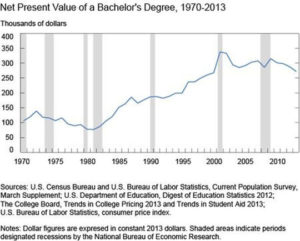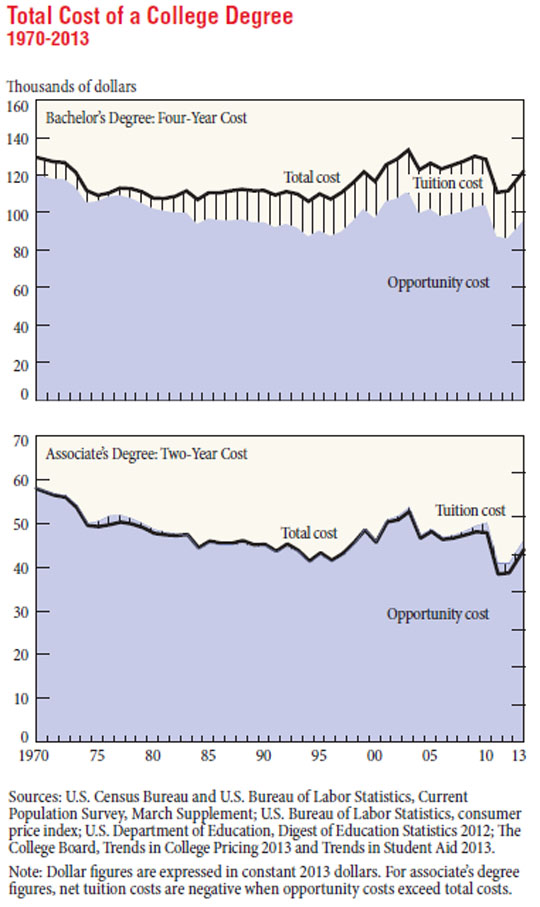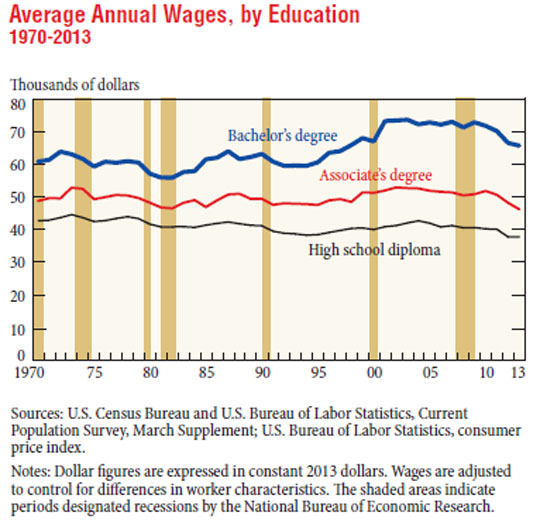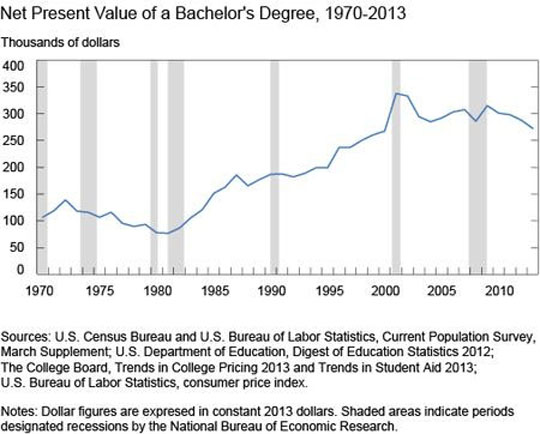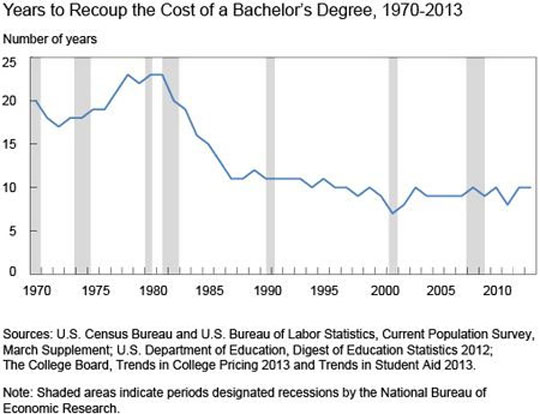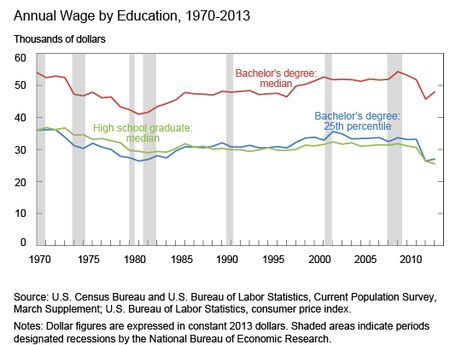Is college worth the cost purely in financial terms? Apparently that depends on many decisions, including the student’s preparedness and career choices. According to a recent study, the median college graduate will earn approximately $300,000 more over a lifetime than a high school graduate. But, of course, that depends on the choice of major, followed by employment. And it depends on graduating in four years, not five or six. And it depends on the reduction of college cost by student aid, frequently restricted to certain income strata. And even then, only 75% of all graduates do better in the long term. So college is a risk, as are all choices that increase income. Risk is the major generator of income differences. So how to make that choice?
In order to gauge the value of a college degree, first the full cost must be assessed. Attendance at college costs tuition, books, and other fees. But the income from working is also lost; a high school graduate works those four years instead of studying. This is commonly referred to as the opportunity cost. (Note that room and board is assumed to be equal in either case.) So college has tuition costs and opportunity costs. And these costs are upfront costs whose value increases with time.
The lost income over those four years is by far the largest cost as long as student aid reduces the cost of going to college to approximately $6,500 or so. But the student aid to get to this cost is not distributed evenly, with many middle class families being priced out of the market. College aid is discriminatory with severe disparate impact. So the return on the investment in a college education may vary considerably depending on family means.
The wages for college educated students also varies considerably, but can be averaged over all graduates and their careers. Typically, in current dollars, the difference between college graduates and high school graduates is over $25,000 per year using the current incomes with various years of experience. This assumes that income increases with time in the same way as exhibited by the income variation with experience, that is, income is ergodic.
Note that the average income for college graduates has been decreasing for the five years or so to the end of the study period, but the average income for high school graduates has been decreasing as well. The lengthy recession of the last eight years can measured in lost income.
The net result of this tradeoff of cost for college versus future income can be summarized as an average gain over an entire career. The full calculation over several decades shows that the value of college has increased over time, peaking around 2000 at a little over $300,000 for a full career. (Of course, graduating in five or six years leads to reduced expectations according to a recent study.)
The average time to breakeven with the initial costs is approximately ten years, if the tuition costs have been contained by student aid and the student graduated in four years. Of course, all income cannot be put to college loans, so they will stretch out even longer.
This is the average of many graduate experiences. The variation is large enough to increase the risk for the poorer students or those who chose a low paying careers. According to a recent study, the income for the lower 25% of all college graduates just about breaks even with high school graduates. These students incurred college cost without any net financial gain.
And, all of these studies ignored those students who went to college and dropped out. They incur costs without the possibility of future payback. Curiously, the number of dropouts in public universities varies considerably from state to state. The average for sixth year graduates is 59%, or inverted, 41% never graduate within six years. Coupled with the 25% of college graduates for whom college does not provide an increased income, fully 56% of all students who enter college lose money over their careers by attending college. Still, that is a far better risk than the lottery.
But is it better than trade schools? Typical incomes for the electrical trade skills are on the order of $50,000 per year after apprenticeship. This is considerably more than the average income for high school graduates and not far below the average income of college graduates. And trade schools, like Oliver Wolcott High School, offer a beginning education that fits such trade skills, providing an excellent alternative to a four year college at considerably reduced financial risk. (Note that training in trade skills is followed by an apprenticeship.) While college offers more than just financial rewards, many students cannot take advantage of either the academic environment or the ability to open different employment doorways. Why are we not recommending a trade skill education in middle school as a viable alternative to regular high school?

